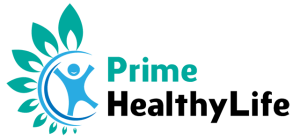Knowing how to do basic first aid might save someone’s or your own life. In an emergency, these abilities are simple to acquire and retain. In an emergency, basic life skills such as CPR, splinting, and bleeding control are critical.
- CPR (cardiopulmonary resuscitation)
CPR is the most well-known and widely used first-aid procedure. CPR is straightforward to learn, takes just five minutes, and can save a life. CPR (cardiopulmonary resuscitation) is a kind of artificial ventilation that may improve a person’s brain function, blood circulation, and breathing. Knowing how to do CPR in an emergency is crucial.
- The Heimlich Maneuver is a technique used to save someone’s life.
If someone is choking, the Heimlich technique may be done to dislodge whatever is obstructing their airways, possibly saving their lives or avoiding severe brain damage. When a person’s airways are cut off, they usually have around five minutes before brain damage begins.
- Wrap the wounded region with a splint.
When someone in your group breaks a bone while you’re on vacation, you’ll need to apply a splint. If the injury is not addressed before conveying the wounded individual, it may progress and cause excruciating agony. If you’re in the mountains or on the trails, you may do a split using home objects or a stick and your clothes.
- Put an End to the Bloodletting
It is critical to halt the bleeding if someone is bleeding heavily. If a major artery or vein ruptures, the afflicted individual may die within 15 to 30 minutes. Stopping the bleeding might be the difference between life and death. The ability to make a tourniquet is an essential but precious skill to have.
- The fifth and last stage is to cure a burn.
A burn injury may be classified into three phases, each of which requires a different treatment. All you need to treat first-degree burns is soap and water, as well as some loose gauze. Blisters and edema will occur on the skin of persons suffering from second-degree burns. A first-degree burn may be treated with cold water. Whiteness, blistering, and numbness are symptoms of third-degree burns. A doctor should be called in to treat these wounds.
- Concussion Symptoms and Signs
Medical treatment is required in the event of a concussion. Look for symptoms such as dizziness, pupil dilation, coherence, and so on after a head injury. A concussion may have long-term repercussions on the brain if not treated immediately. If you see any of the symptoms of a concussion, get medical attention immediately.
- When in doubt, seek help.
Sprains are a frequent kind of injury. While you wait for a doctor to examine the sprained joint, keep it elevated with an ace bandage. Sprains may cause long-term cartilage and tissue damage if not treated appropriately.
- Stitches and sutures
Nothing can be predicted, so being prepared is always a brilliant idea. You may need to bandage a wound before seeking medical attention.
Even strangers are at risk of harm or sickness. Over 20,000 Australians die each year due to cardiovascular diseases such as heart attacks and angina (ABS 2012). 80% of cardiac arrests occur in the home or among family members (HSF 2012). If you need to do CPR on someone, it is most often a friend or family member. You, your spouse, your kid, or a close friend may be the unfortunate one. If you’ve received First Aid training, you’ll be able to save a loved one’s life.
You can quickly know these things also through the internet, and you need to do some research.


